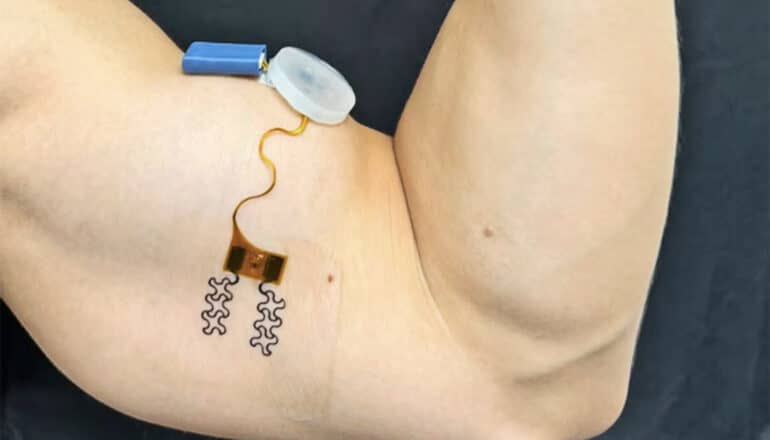
Listening well can move you, literally, a new study finds.
Within every human culture rests the potential for a distinctly positive emotional experience that’s variously characterized, in English, as feeling moved, emotionally touched, or heartwarming.
Other languages rely on similar contact metaphors to describe this feeling, which has been labeled only recently by researchers as Kama Muta, a Sanskrit word for being “moved by love.”
Kama Muta is an emotional episode that produces physiological, cognitive, and behavioral changes—such as a buoyant sense of warmth, closeness, a lump in the throat, or goosebumps—that contribute to fostering bonds and enriching experiences.
Scholars of Kama Muta argue that it emerges whenever we participate in or witness a sudden increase in the closeness of a relationship. This can include situations as different as a burgeoning romance, a reunion after an extended period of separation, or witnessing someone sacrifice for another person.
Science is just beginning to grasp this profound and sudden surge in the connection strength between people.
Now, researchers have further expanded this understanding of Kama Muta by approaching the experience as listening researchers.
Kama Muta can be elicited through high-quality listening, according to Kenneth DeMarree, an associate professor of psychology in the University at Buffalo.
Through a series of studies, the researchers found that high-quality listening—which involves attention toward a speaker; seeking to understand them and their experience; and having positive intentions toward them—can enhance Kama Muta.
“High quality listening is listening that tries to understand people and accepts them for who they are, without judging anyone’s experiences or perceptions,” says DeMarree.
He and his colleagues argue that when people share a personal experience with someone who listens to them well, it leads them to go deeper, subsequently sharing more of themselves in the conversation.
“Listening offers an opportunity to create connections,” he says.
Across three studies, the authors provide evidence supporting the correlation between high-quality listening in conversations and greater Kama Muta—for both speakers and listeners.
“In terms of our daily lives, these results show how important good listening can be to shaping and developing all types of relationships, whether friendships, romantic partnerships, or working relationships,” says DeMarree.
“Listening can foster these positive, meaningful, and important feelings that have implications for not only how we feel in that moment, but for our motivation to strengthen those relationships.”
Five specific dimensions influence Kama Muta, although it may only be in more intense instances of the emotion that a person experiences all five.
The first is communal sharing, or the sense of closeness or togetherness. Secondly, Kama Muta is generally a positive feeling, like that associated with joy, affection, or delight. The third dimension constitutes a range of physiological sensations where people describe things like a warm feeling in the chest, goosebumps, a lump in the throat, or teary eyes. The fourth dimension is a commitment to engage in behaviors that further strengthen the relationship. And finally, Kama Muta involves labeling the experience as heartwarming or feeling moved or touched.
The three studies, involving groups of 293, 513 and 318 participants, all tested whether high-quality listening increases speakers’ and listeners’ Kama Muta using a scale for each of the five dimensions.
The first was a scenario study that asked people to recall an act they regretted and to imagine talking with someone about it with someone who listened to them well or not. The second study asked people to recall conversations from their actual lives and attempted to get at both sides of the conversation.
Specifically, participants recalled an actual conversation in which either they or someone they knew talked about a positive event where the listener either listened well or not. Study three used real conversations between people where one of them shared a meaningful experience while the other listened to them: Each person reported how well they thought the listener was tuned into the conversation.
The patterns across the studies were mostly the same—higher-quality listening predicted greater reports of Kama Muta across all five dimensions. The final study was an exception, as among speakers, perceiving higher quality listening predicted three of the dimensions of Kama Muta, excluding the devotion and physical sensations.
“High-quality listening allows us to go deeper in a conversation, which can lead to a greater degree of closeness,” says DeMarree. “Greater Kama Muta.”
The findings will appear in the journal Emotion.
Source: University at Buffalo
The post Deep listening can make you feel more ‘Kama Muta’ appeared first on Futurity.
from Futurity https://ift.tt/ycGIXdF






